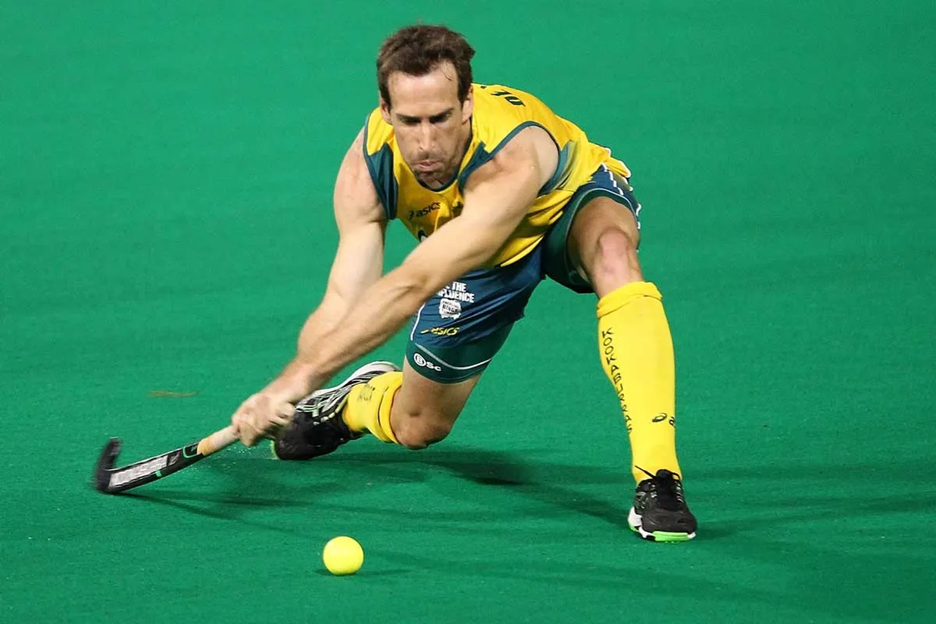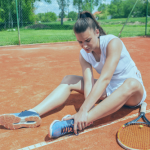Field hockey is fast, skilful, and demanding. Repeated sprints, sharp cuts, low defensive postures, stick tackles, and hard ball strikes can overload joints and soft tissues if training load, technique, and recovery are out of balance. The scenarios below reflect what clinicians see every week on grass and artificial turf. Each pair a common problem with a practical, evidence-based solution so players can recognise issues early and return safely.

The Stick Tackle Shoulder
Reaching or falling after contact can sprain the acromioclavicular joint or strain the rotator cuff. Pain sits on the top or front of the shoulder, and lifting the arm feels weak. First steps are sling support for comfort, ice, and prompt assessment to exclude dislocation or fracture. Rehabilitation restores shoulder blade control, external rotation strength, and overhead range before adding resisted hitting and long aerials.
The Cutting Ankle on Turf
Quick lateral moves and stepping onto a teammate’s foot are classic causes of lateral ankle sprain. Swelling on the outer ankle and difficulty with weight bearing are typical. Protect, compress, elevate, and use brief icing for comfort. Begin a gentle range of motion as pain allows, then progress to single-leg balance, calf raises, hopping, and cutting drills. Supportive taping or a lace-up brace helps during the early return.
The Defender’s Hand and Wrist
Blocked hits and stick clashes can bruise the hand, sprain the wrist, or rarely fracture carpal bones. Ulnar side wrist pain with grip weakness is a red flag. Rest, splint for comfort, and arrange imaging if pain persists. Padded gloves and correctly shaped grips reduce vibration and pressure points. Technique matters too. Present the stick face with relaxed hands, avoid crossing wrists awkwardly, and practise safe block tackles that keep fingers clear of the ball’s path.
The Quiet Low Back From a Low Stance
Long periods in a crouched posture with tight hips shift the load into the lower back, producing an ache that lingers after training. Bed rest is not helpful. Build core endurance with plank variations and dead bug drills, improve hip mobility, and add thoracic rotation so the spine shares load more evenly. Manage weekly volume for short periods, then reintroduce higher intensity in steps. Land from jumps and sudden stops with soft knees and hips so forces are absorbed through the legs, not the lumbar spine.
Shin and Foot Overuse
Mileage on firm turf can provoke medial tibial stress syndrome and plantar heel pain. Shin pain that warms up then returns later suggests overload. Reduce running spikes, add calf and soleus strengthening, and progress training volume steadily. If pain localises to a small spot and worsens with hopping, seek assessment to exclude a stress fracture. For heel pain, use calf stretching, foot intrinsic strengthening, and short-term cushioned insoles.
Conclusion
Most field hockey injuries respond well to early spotting, sound first aid, and rehabilitation that restores control as well as strength. Small adjustments in workload, technique, and protective kit make a big difference across a long season. If symptoms persist beyond a few days or limit sleep or daily life, consult an orthopaedist. With a clear diagnosis and a staged plan, you can return to training and match confident, strong, and ready to perform.
For enquiries and online appointments, send a message to www.DrAyyappanVNair.com/contact
For informative videos related to Shoulder problems and their treatment options, Sports Injuries and other orthopedic conditions, visit our YouTube channel Bangalore Shoulder Institute – https://www.youtube.com/@BangaloreShoulderInstitute
Q & A's
Does stick length or lie affect wrist pain and low back fatigue?
Yes. A stick that is too long or with the wrong lie makes you reach and rotate awkwardly, loading the lumbar spine and ulnar side of the wrist. Standing in skates, the tip should sit near the chin for forwards and slightly higher for defenders, with the blade flush on the ice. Shorten or adjust the lie if the heel or toe lifts during normal stance. Use padded grips to reduce vibration from mishits. Train trunk endurance and hip hinge mechanics so you can skate tall between shifts and bend from the hips rather than rounding the lower back.
How much should I drink during coldrink sessions when I do not feel thirsty?
Cold blunts thirst, but you still lose fluid through breathing and sweat. Weigh yourself before and after intense sessions; a loss of over 2 percent of body mass signals under-hydration. Sip water regularly between shifts and at breaks, even if you are not thirsty. For sessions over 60 to 75 minutes, consider a light electrolyte drink, especially if you sweat heavily or wear multiple layers. Urine should remain pale by the end of training. Avoid large boluses right before stepping onto the ice because they can feel uncomfortable. Warm-ups that raise core temperature also stimulate thirst cues.


